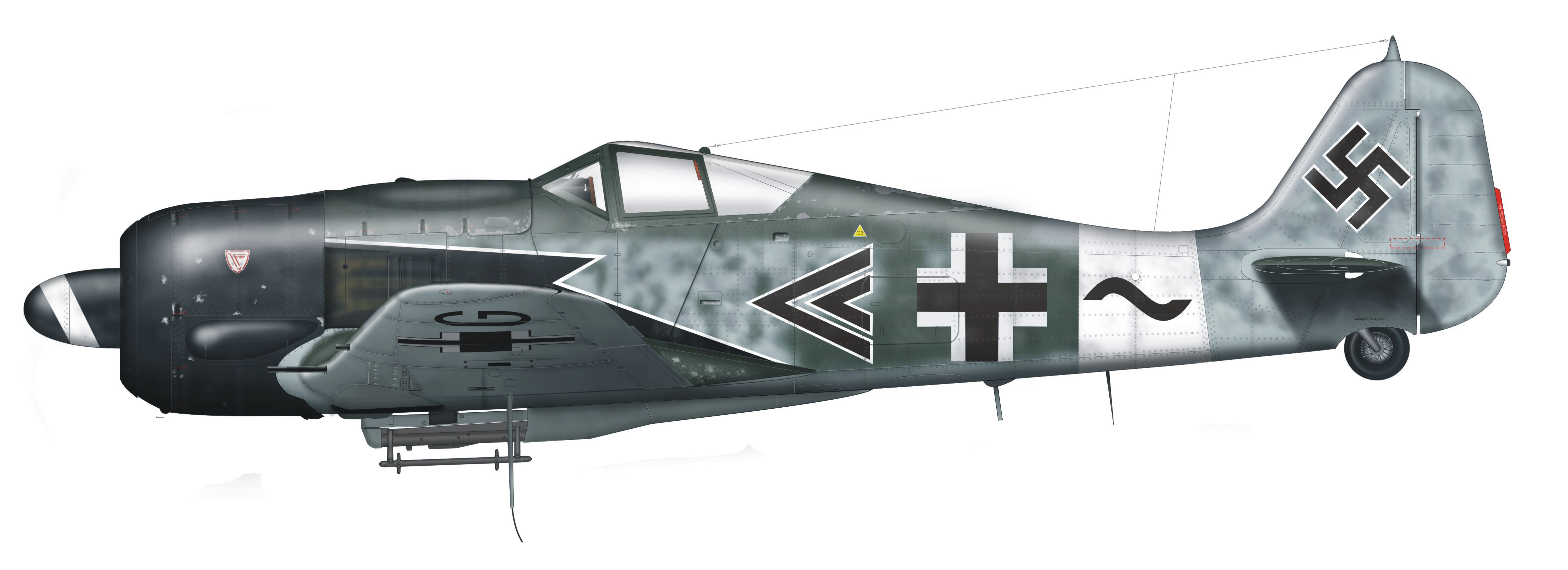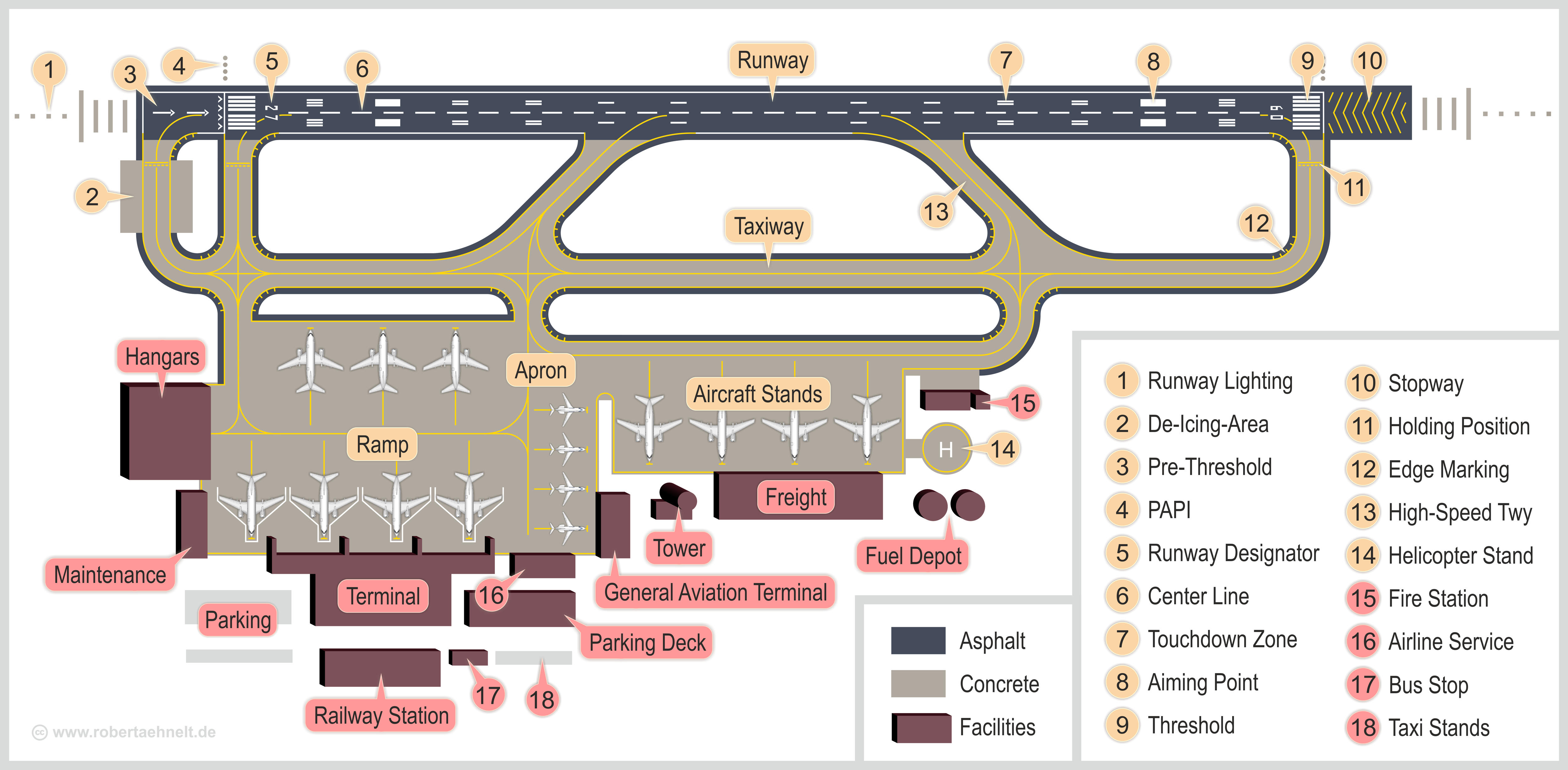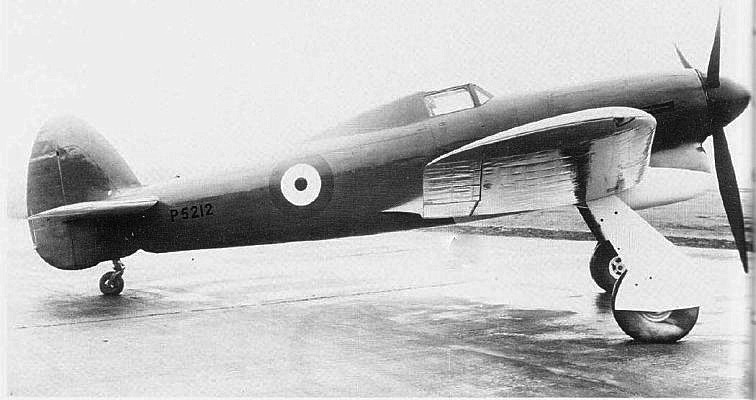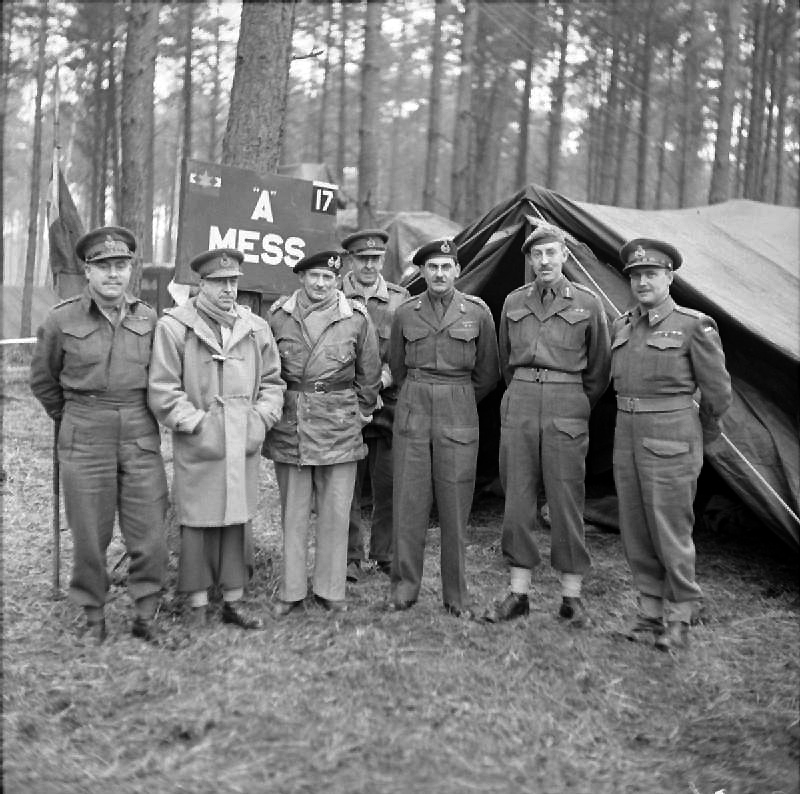|
Vitry Airfield
Vitry-en-Artois Airfield was originally a grass airfield dating back prior to 1914, located northeast of Vitry-en-Artois; north-northeast of Paris. During World War I it was used by the Imperial German Air Service. With the outbreak of World War II it served as a temporary landing ground for several RAF squadrons attached to the BEF. In June 1940 during the Battle of France it was seized by the Germans, who developed it as a Luftwaffe fighter and bomber base during the occupation. Recaptured by the Allies in late 1944, it was used as an Allied military airfield until the end of the war. History Error : Confusion between Vitry-en-Artois (B-50, northern France) and Vitry-le-François (A-67, Champagne region). German use during World War II A small grass airfield prior to World War II, it was seized by the Germans in late May 1940. After its capture, Vitry-En-Artois was used by the Luftwaffe as a combat airfield during the Battle of France. As part of the Blitzkrieg, the Germa ... [...More Info...] [...Related Items...] OR: [Wikipedia] [Google] [Baidu] |
Vitry-en-Artois
Vitry-en-Artois (; literally "Vitry in Artois"; or ) is a Communes of France, commune and in the Pas-de-Calais Departments of France, department in the Hauts-de-France region of France. Geography Vitry-en-Artois is situated some northeast of Arras, at the junction of the N50, D39 and the D42 roads. The river Scarpe (river), Scarpe flows through the town, which is also served by the SNCF railway. The World War II German airfield was later used by the Americans, then after the war, was put to commercial use as the local aerodrome. Population See also *Communes of the Pas-de-Calais department References Communes of Pas-de-Calais, Vitryenartois {{Arras-geo-stub ... [...More Info...] [...Related Items...] OR: [Wikipedia] [Google] [Baidu] |
Focke-Wulf Fw 190
The Focke-Wulf Fw 190, nicknamed ''Würger'' (Shrike) is a German single-seat, single-engine fighter aircraft designed by Kurt Tank at Focke-Wulf in the late 1930s and widely used during World War II. Along with its well-known counterpart, the Messerschmitt Bf 109, the Fw 190 became the backbone of the (Fighter Force) of the . The twin-row BMW 801 radial engine that powered most operational versions enabled the Fw 190 to lift larger loads than the Bf 109, allowing its use as a day fighter, fighter-bomber, ground-attack aircraft and to a lesser degree, night fighter. The Fw 190A started flying operationally over France in August 1941 and quickly proved superior in all but turn radius to the Supermarine Spitfire (early Merlin-powered variants)#Mk V (Mk V (Types 331, 349 and 352)), Spitfire Mk. V, the main front-line fighter of the Royal Air Force (RAF), particularly at low and medium altitudes. The 190 maintained its superiority over Allies of World War II, Allied fighters until ... [...More Info...] [...Related Items...] OR: [Wikipedia] [Google] [Baidu] |
Airports In Hauts-de-France
An airport is an aerodrome with extended facilities, mostly for commercial air transport. They usually consist of a landing area, which comprises an aerially accessible open space including at least one operationally active surface such as a runway for a plane to take off and to land or a helipad, and often includes adjacent utility buildings such as control towers, hangars and terminals, to maintain and monitor aircraft. Larger airports may have airport aprons, taxiway bridges, air traffic control centres, passenger facilities such as restaurants and lounges, and emergency services. In some countries, the US in particular, airports also typically have one or more fixed-base operators, serving general aviation. Airport operations are extremely complex, with a complicated system of aircraft support services, passenger services, and aircraft control services contained within the operation. Thus airports can be major employers, as well as important hubs for tourism and o ... [...More Info...] [...Related Items...] OR: [Wikipedia] [Google] [Baidu] |
Air Technical Service Command
An atmosphere () is a layer of gases that envelop an astronomical object, held in place by the gravity of the object. A planet retains an atmosphere when the gravity is great and the temperature of the atmosphere is low. A stellar atmosphere is the outer region of a star, which includes the layers above the opaque photosphere; stars of low temperature might have outer atmospheres containing compound molecules. The atmosphere of Earth is composed of nitrogen (78%), oxygen (21%), argon (0.9%), carbon dioxide (0.04%) and trace gases. Most organisms use oxygen for respiration; lightning and bacteria perform nitrogen fixation which produces ammonia that is used to make nucleotides and amino acids; plants, algae, and cyanobacteria use carbon dioxide for photosynthesis. The layered composition of the atmosphere minimises the harmful effects of sunlight, ultraviolet radiation, solar wind, and cosmic rays and thus protects the organisms from genetic damage. The current composition o ... [...More Info...] [...Related Items...] OR: [Wikipedia] [Google] [Baidu] |
Douglas A-20 Havoc
The Douglas A-20 Havoc (company designation DB-7) is an American light bomber, attack aircraft, Intruder (air combat), night intruder, night fighter, and reconnaissance aircraft of World War II. Designed to meet an Army Air Corps requirement for a bomber, it was ordered by France for their air force before the USAAC decided it would also meet their requirements. French DB-7s were the first to see combat; after the fall of France, the bomber served with the Royal Air Force under the British military aircraft designation systems#Names, service name Boston. From 1941, night fighter and Intruder (air combat), intruder versions were given the service name Havoc. In 1942 USAAF A-20s saw combat in North Africa. It served with several Allies of World War II, Allied air forces, principally the United States Army Air Forces (USAAF), the Soviet Air Forces (''VVS''), Soviet Naval Aviation (''AVMF''), and the Royal Air Force (RAF) of the United Kingdom. A total of 7,478 aircraft were built, o ... [...More Info...] [...Related Items...] OR: [Wikipedia] [Google] [Baidu] |
North American B-25 Mitchell
The North American B-25 Mitchell is an American medium bomber that was introduced in 1941 and named in honor of Brigadier General Billy Mitchell, William "Billy" Mitchell, a pioneer of U.S. military aviation. Used by many Allies of World War II, Allied air forces, the B-25 served in every theater of World War II, and after the war ended, many remained in service, operating across four decades. Produced in numerous variants, nearly 10,000 B-25s were built. It was the most-produced American medium bomber and the List of most-produced aircraft , third most-produced American bomber overall. These included several limited models such as the F-10 reconnaissance aircraft, the AT-24 crew trainers, and the United States Marine Corps' PBJ-1 Maritime patrol aircraft, patrol bomber. Design and development In March 1939, the United States Army Air Corps, US Army Air Corps issued a specification for a medium bomber that was capable of carrying a payload of over at . North American Aviati ... [...More Info...] [...Related Items...] OR: [Wikipedia] [Google] [Baidu] |
Hawker Typhoon
The Hawker Typhoon was a British single-seat fighter-bomber, produced by Hawker Aircraft. It was intended to be a medium-high altitude interceptor aircraft, interceptor, as a replacement for the Hawker Hurricane, but several design problems were encountered and it never completely satisfied this requirement.Thomas and Shores 1988, p. 16. The Typhoon was originally designed to mount twelve .303 British, .303 inch (7.7 mm) M1919 Browning machine gun, Browning machine guns and be powered by the latest engines. Its service introduction in mid-1941 was plagued with problems and for several months the aircraft faced a doubtful future. When the ''Luftwaffe'' brought the new Focke-Wulf Fw 190 into service in 1941, the Typhoon was the only RAF fighter capable of catching it at low altitudes; as a result it secured a new role as a low-altitude interceptor. The Typhoon became established in roles such as night-time intruder and long-range fighter. From late 1942 the Typhoon was equipped ... [...More Info...] [...Related Items...] OR: [Wikipedia] [Google] [Baidu] |
First Allied Airborne Army
The First Allied Airborne Army was an Allies of World War II, Allied Military organization, formation formed on 2 August 1944 by the order of General of the Army (United States), General Dwight D. Eisenhower, the Supreme Headquarters Allied Expeditionary Force, Supreme Allied Commander of the Allied Expeditionary Force. The formation was part of the Supreme Headquarters Allied Expeditionary Force, Allied Expeditionary Force and controlled all Allied airborne forces in Western Europe from August 1944 to May 1945. These included the U.S. IX Troop Carrier Command, the U.S. XVIII Airborne Corps, which controlled the 17th Airborne Division (United States), 17th, 82nd Airborne Division, 82nd and 101st Airborne Divisions and a number of independent airborne units, all British airborne forces including the 1st Airborne Division (United Kingdom), 1st and 6th Airborne Division (United Kingdom), 6th Airborne Division plus the 1st Independent Parachute Brigade (Poland), Polish 1st Parachute B ... [...More Info...] [...Related Items...] OR: [Wikipedia] [Google] [Baidu] |
Royal Engineers
The Corps of Royal Engineers, usually called the Royal Engineers (RE), and commonly known as the ''Sappers'', is the engineering arm of the British Army. It provides military engineering and other technical support to the British Armed Forces and is headed by the Chief Royal Engineer. The Corps Headquarters and the Royal School of Military Engineering are in Chatham, Kent, Chatham in Kent, England. The corps is divided into several regiments, barracked at various places in the United Kingdom and around the world. History The Royal Engineers trace their origins back to the military engineers brought to England by William the Conqueror, specifically Gundulf of Rochester, Bishop Gundulf of Rochester Cathedral, and claim over 900 years of unbroken service to the crown. Engineers have always served in the armies of the Crown; however, the origins of the modern corps, along with those of the Royal Artillery, lie in the Board of Ordnance established in the 15th century. In Woolwich ... [...More Info...] [...Related Items...] OR: [Wikipedia] [Google] [Baidu] |
First Canadian Army
The First Canadian Army () was a field army and a formation of the Canadian Army in World War II in which most Canadian elements serving in North-West Europe were assigned. It served on the Western Front from July 1944 until May 1945. It was Canada's first and, so far, only field army. The army was formed in early 1942, replacing the existing unnumbered Canadian Corps, as the growing contribution of Canadian forces to serve with the British Army in the United Kingdom necessitated an expansion to two corps. By the end of 1943 Canadian formations consisted of three infantry divisions, two armoured divisions and two independent armoured brigades. The first commander was Lieutenant-General A. G. L. "Andy" McNaughton, who was replaced in 1944 by General H. D. G. "Harry" Crerar. Both had been senior Royal Regiment of Canadian Artillery officers in the Canadian Corps in World War I. Allied formations of other nationalities were added to the First Canadian Army to keep it at full st ... [...More Info...] [...Related Items...] OR: [Wikipedia] [Google] [Baidu] |







